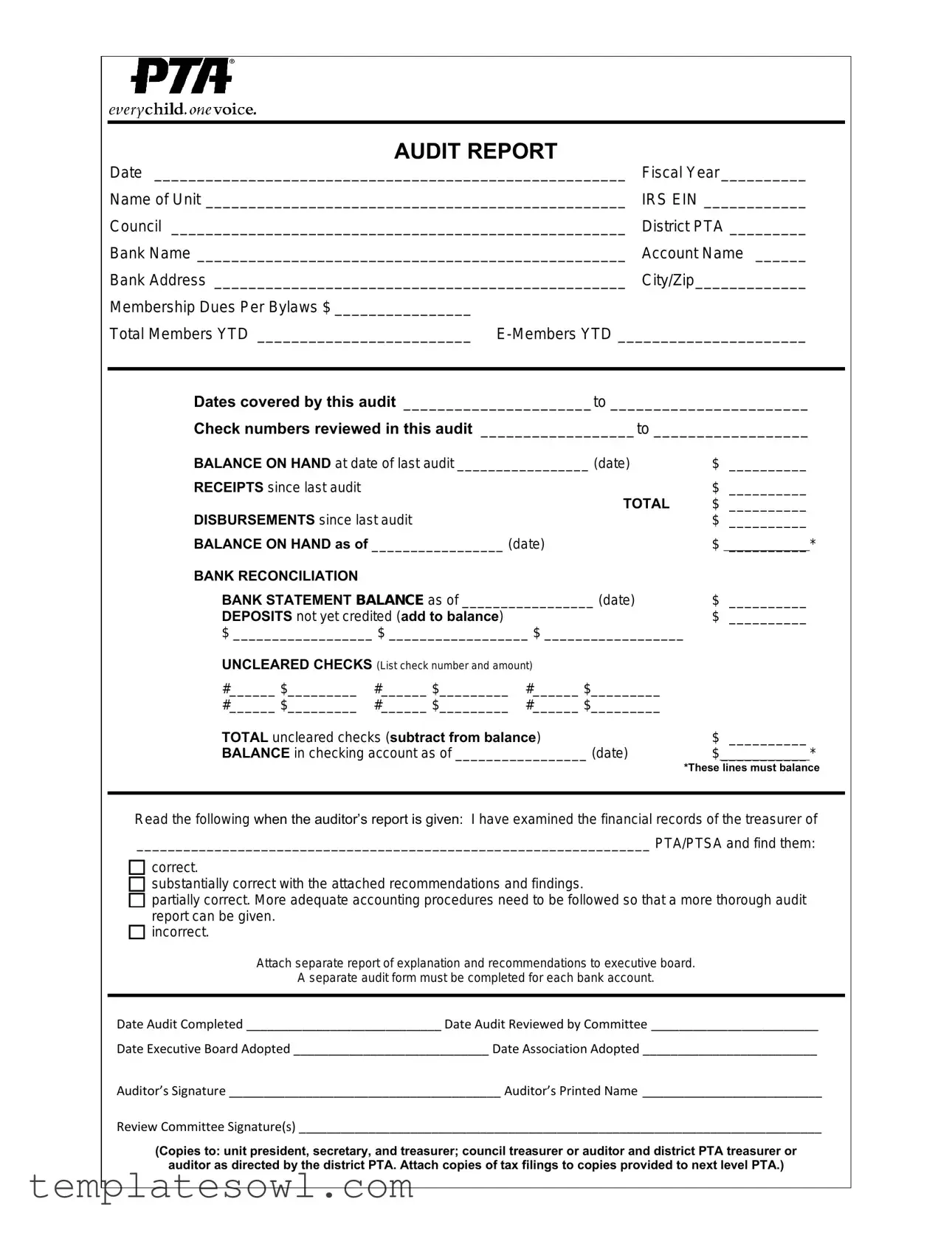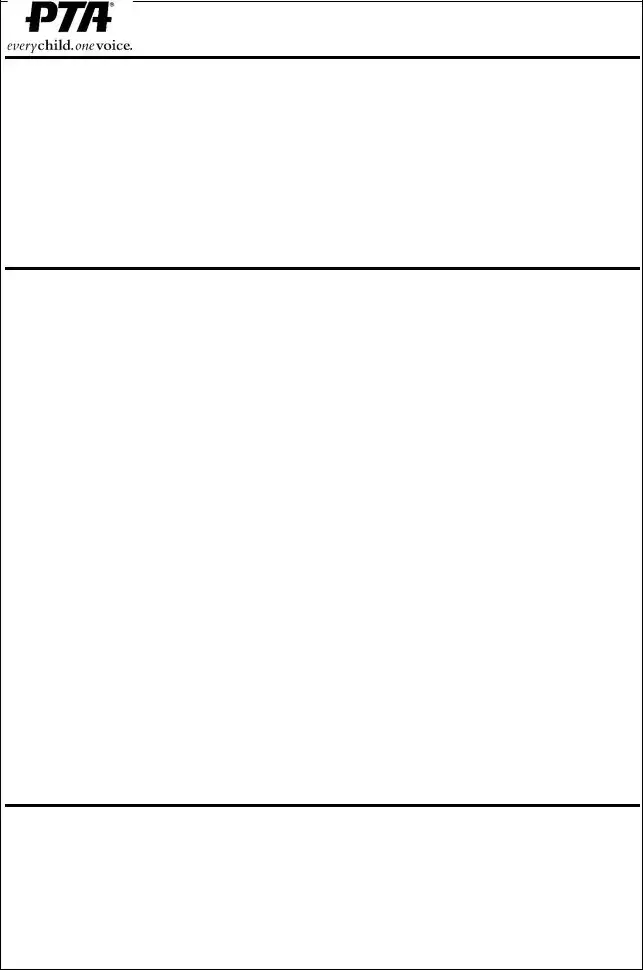What is the purpose of the PTA Audit Sample form?
The PTA Audit Sample form is designed to ensure financial transparency and accountability for PTA units. It provides a structured way to review and confirm the accuracy of financial records, assess compliance with bylaws, and make recommendations for any improvements needed in financial practices.
Who needs to complete this audit?
This audit should be completed by an appointed auditor, preferably someone who is not part of the financial management team, in order to maintain objectivity. The auditor reviews the financial records of the PTA treasurer and prepares the report based on their findings.
What financial information is required for the audit?
Auditors need a variety of financial data, including dates covered, bank statements, a list of receipts and disbursements since the last audit, and the balance on hand as of the audit date. This information ensures that the audit reflects a complete and accurate picture of the PTA's finances.
How often should the PTA conduct an audit?
It is advisable to conduct an audit at least once a year. After the fiscal year ends, the audit should take place to evaluate the financial activities and confirm that everything balances correctly. This regular oversight helps to ensure financial integrity within the organization.
What happens if the audit finds discrepancies?
If discrepancies are found, the auditor will need to classify their findings as correct, substantially correct, partially correct, or incorrect. Depending on the level of discrepancies identified, the auditor may recommend improved accounting procedures or provide a separate report detailing findings and suggestions for the executive board.
How does the audit report get approved?
After the audit is completed, it is reviewed by a committee. Once approved by the committee, the audit report must be adopted by the executive board and then presented to the PTA association for final approval. Each step ensures that the findings are acknowledged and that any necessary changes are implemented.
Are there copies of the audit report distributed?
Yes, copies of the completed audit report must be shared with several individuals, including the unit president, secretary, and treasurer. Additionally, copies should be sent to the council treasurer or auditor, as well as the district PTA treasurer or auditor, as directed by the district PTA. This distribution helps to maintain transparency at all levels of the organization.
What should auditor's report contain?
The auditor's report should include a statement about the treasurer's financial records and a signature by the auditor. It should also detail any recommendations or findings, especially if the records are not correct or require improved accounting procedures. Overall, the report serves as a critical tool for fostering fiscal responsibility within the PTA.

